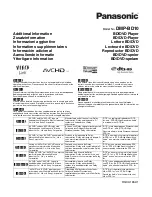
30
Definition:
ffmpeg
Calls the program
-i
Defines an input file
-c:v
Defines the codec used for video encoding (libx265 for h.265 and libvpx-vp9
for VP9)
-minrate
Defines the minimum bitrate (in that case 30 Mbit)
-maxrate
Defines the maximum bitrate (in that case 30 Mbit)
-b:v
Defines the average bitrate
-i input%04d.tif
Defines the leading zeros of the picture sequence (e.g.: input0001.tif,
input0002.tif, …)
-x265-params
Uses the x265 CLI interface for advanced x265 settings
pass=
Defines the encoder pass
vbv-maxrate=
Defines the maximal bitrate for the video buffer verifier feature
vbv-bufsize
Defines the maximal buffer size for the video buffer verifier feature
-pix_fmt
Defines the pixelformat. Needs to be YUV 4:2:0. For 10Bit encoding you need
to specify yuv420p10le. Please not that 10Bit is only supported on Linux
builds at the moment.
-f
Defines the container format for the first encoder pass
-y
Allows overwriting existing files
NUL
Write the first encoder pass to NUL (no file will be encoded). If you are using
Linux or a Mac, please use /dev /null && instead of NUL.
-framerate
Defines the framerate of the input file. If you do not set the frame rate,
ffmpeg will use the default framerate of 25fps.
-r
Defines the framerate of the output file. If you do not set the frame rate,
ffmpeg will use the default framerate of 25fps.
If your source material is complex, it is highly recommended to use 2-pass encoding to archive a
stable bitrate with no peaks so that the decoder does not get a buffer overflow. Another benefit is
that normally the file size will shrink on second encoder pass. It is recommended to use an
uncompressed source file for the best output results.
9.5.
MUXING MULTIPLE AUDIO STREAMS
The UHD Player is able to play videos containing more than one audio stream. Like on a DVD
,
you can
switch between languages without stopping the video playback. The different audio tracks can be
switched either by using AVIO or UDP commands. The player can use up to 10 audio streams. ffmpeg
can mux several audio streams into one video file. This cannot be done with Handbrake or Adobe
Media Encoder.
This can be achieved by the following command:
ffmpeg -i input.mp4 -i language1.mp3 -i language2.mp3 -map 0:v -map 0:a:0 -map 1:a -map
2:a -metadata:s:a:0 language=ger -metadata:s:a:1 language=eng -metadata:s:a:2
language=fre -c copy -shortest output.mp4
Definition:
















































